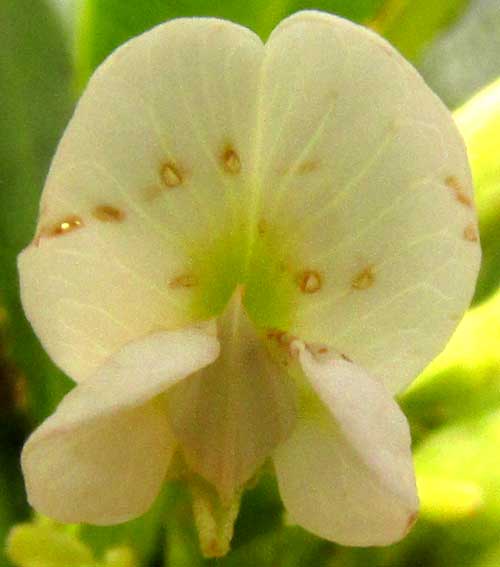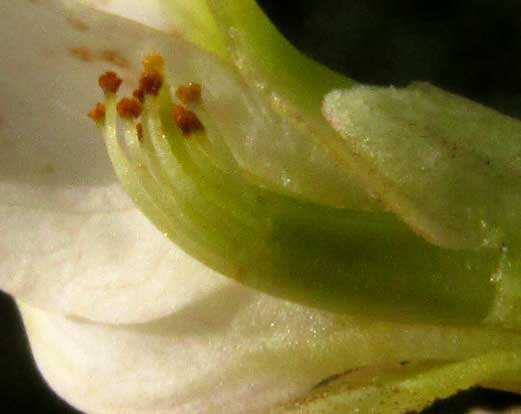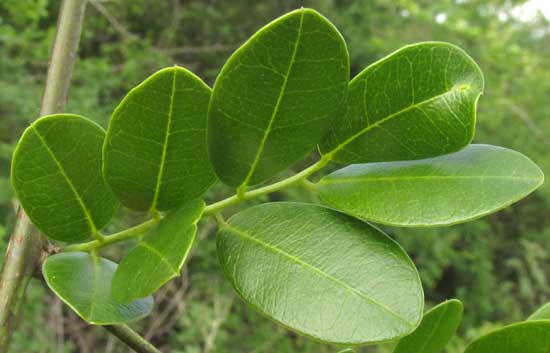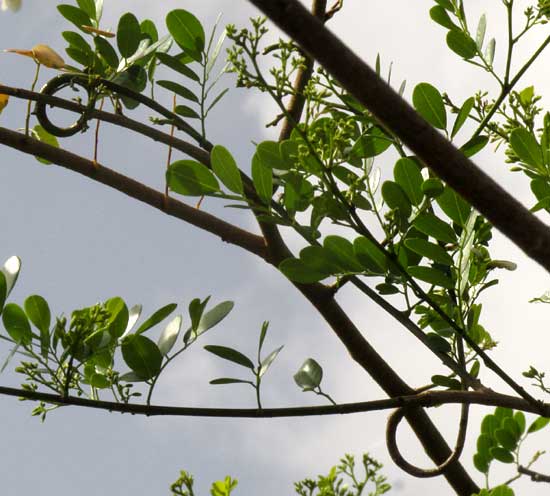Excerpts from Jim Conrad's
Naturalist Newsletter
from the July 27, 2018 Newsletter with notes from an early June camping trip to southeastern Campeche state, MÉXICO
LENNEA TREE
During my recent camping trip to southeastern Campeche state, on the morning of July 2nd near Becán on the highway between Chetumal and Escárcega a small, slender-limbed tree turned up embedded among other trees and bushes, a flowering limb of wfhich is shown below:

The flowers were arranged in branched panicles, sometimes drooping, as seen below:

As seen from the front, the blossoms were clearly "papilionaceous""

As that picture shows, "papilionaceous" flowers are those with five petals, of which the top -- which more or less rises up and often is enlarged -- is called the standard or banner, plus there are two side petals called wings, and the two lower petals are united along their common margin into a scoop- or boat-like structure. From the side, however, the blossoms appeared to be only weakly papilionaceous, the standard not very erect and not much bigger than the rest, and the wings mostly hiding the keel, as shown below:

If you remove a wing, the blossom's ten stamens are seen forming a curved cylinder around the longish ovary, as shown below:

These features firmly establish our tree as a member of the huge Bean Family. Another field mark often seen in that family was the tree's pinnately compound leaves, seen below:

One unusual feature of the tree was that its slender branches sometimes curled around as if they wanted to become vines, as seen below:

All these features led to a little-documented tree endemic to southern Mexico, Belize and Guatemala, LENNEA MELANOCARPA, with no English name. At first the species was assigned to the genus Robinia, familiar to North Americans as locust trees.
On the Internet little information is available about this tree, though the online Atlas de las Plantas de la Medicina Tradicional Mexicana reports that in the Mexican state of Puebla the tree is commonly used to lower the fever, and that in the state of Veracruz it's valued for curing a certain kind of susto, or magical spell, in which the patient sleeps too much, and at irregular hours.